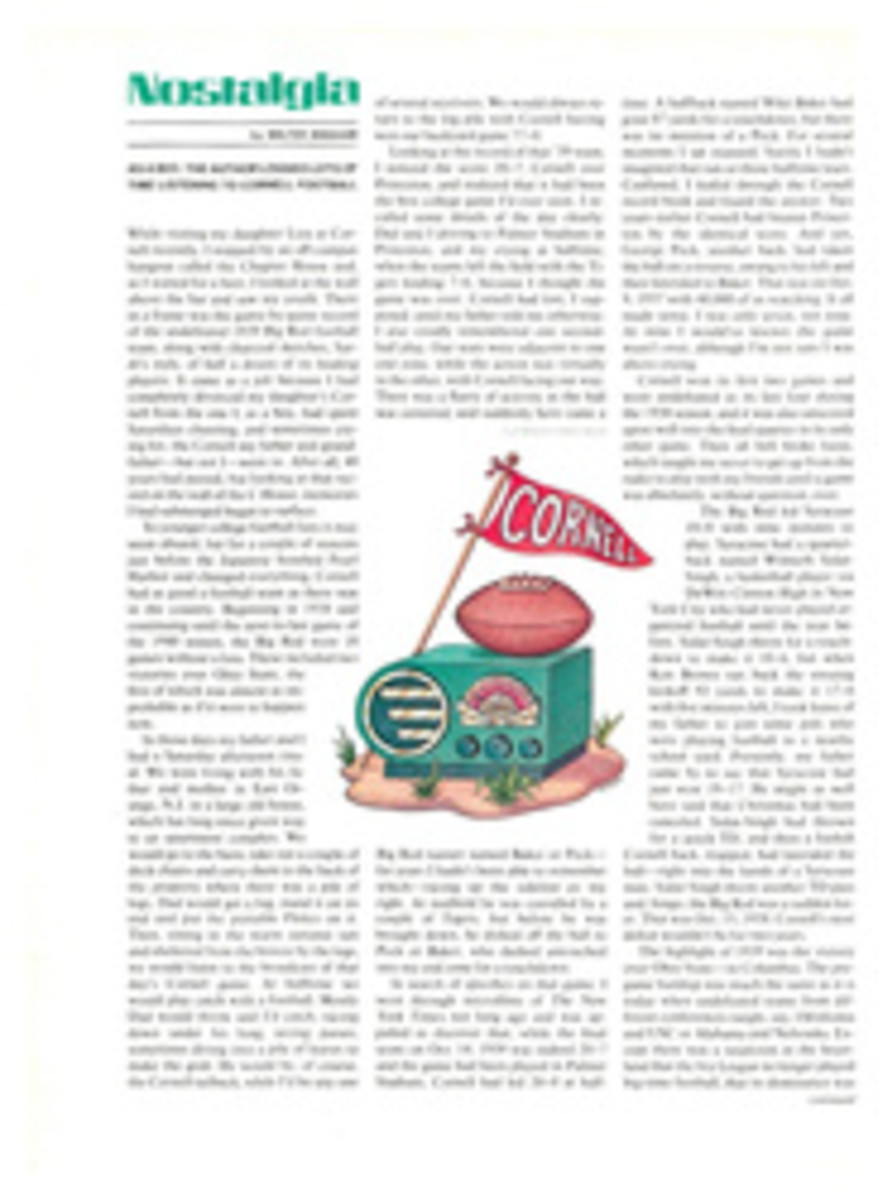
AN 11-MILE CROSS-COUNTRY RUN PUTS THREE SKIERS INTO SEVENTH HEAVEN
What makes New Hampshire's Wildcat Valley Trail a singular cross-country skiing adventure is the mile after mile of relentless downhill. The trail begins at the top of Wildcat Mountain and ends in the town of Jackson, 11 miles away. A skier encounters a vertical descent—3,345 feet—greater than at any other downhill ski area in the East, including the Olympic trails at New York's Whiteface Mountain. In addition, there is the thrill of mastering the switchbacked pitches high on the hill, and the stunning beauty of New Hampshire's backcountry.
But the trail is not for the novice—or even the intermediate—skier. "Most difficult," advises the trail map from the Jackson Ski Touring Foundation. "Skiers should be in top physical condition before attempting the upper trail."
I wasn't about to try it alone, so late last winter I asked Brant Ludington, a part-time instructor at Whiteface, and Annie Bordash, who works at a ski shop in Jackson, to accompany me.
Most skiers who ride up the Wildcat gondola U-turn at the summit and ski down the patrolled, groomed slopes to the warm lodges and hot chocolate at the bottom. The only service we could expect was a first-aid cache a couple of miles downtrail. Brant lifted a barrier rope, sideslipped partway down a chute of wind-hardened slab, turned his skis downhill and disappeared into the forest. A friend had told me not to be intimidated by that steep first pitch, that it wasn't indicative of the entire trail. I crossed my fingers and followed Brant, and Annie followed me.
The light dimmed as we sliced through the thick evergreens. The trail veered south along a sharp traverse, turned abruptly north, and in a small patch spot-lighted by the sun switchbacked again and returned us to shadows.
We didn't have fresh snow, but the track had been resurfaced by the previous day's high winds. Blown snow had filtered evenly between the trees, creating conditions that Brant and Annie agreed were as fast as any they had ever experienced on the upper reaches of the trail. I had hoped for heavier, slower snow, but at least we didn't need to wax our skis.
Christmas-tree-size spruce crowded the edges of the trail, their lower branches weighed down by snow. Thickly needled spruce hold more snow than any other tree, and in the pockets and caverns formed beneath their boughs a variety of small wildlife live cozily.
Like a ribbon draped on the mountainside, the trail continued to weave through heavy forest in a succession of reverse corners and steep lines angling across the slope. Brant was in the lead and I watched him careen around the turns and slide from sight down the drop-offs that inevitably followed each bend. When he howled exultantly, I knew there were thrills ahead. My strategy then was to ski cautiously, weighting and stemming the downhill ski at the corners, easing the uphill ski around and aligning it for the pitch beyond. Anyone who believes that cross-country skiing is a tamer cousin of the downhill discipline cannot have gone down a zigzag mountain trail hardly wider than a ski pole. There is virtually no margin for error, and the potential for a wicked crash into an unyielding tree is high.
After about 30 minutes of continuous switchbacks, the toughest skiing was behind us. The evergreens thinned, the pitch eased and we glided through sunny woodlands—but away from the sheltering spruce, the snow conditions deteriorated. We skied over a wind-packed crust that sometimes collapsed under our weight, as we followed an aisle through ranks of white birch, sailed down a sudden dip, and herringboned up a short, stiff climb, one of the few we would face all day. Then the downhill resumed.
We covered ground quickly and a short time later were at Hall's Ledge, reached by following a short spur off the main trail and a favorite stop for the view across Pinkham Notch to the bowls and ravines of Mount Washington. The spur was fast and icy, and at one sharp curve several rocks poked through the snow, but we all negotiated it safely and stopped briefly to admire the view. Then we skied back up the spur and stood at the crest of the swiftest, most sustained stretch of downhill running we would find, more than a mile and a half down an old farm road.
To control our speed we started off snowplowing, the skis forming sliding wedges ahead of us, but when we reached the lower half of the road, past an abandoned apple orchard, there were firm, machine-set tracks. This is about as far as the track-setting sleds of the Jackson foundation venture, and from here we crouched in downhill tucks and let the slots in the snow cradle the skis.
It seemed simple enough—let the skis run and hang on. But we were soon moving much faster than I'm accustomed to on cross-country skis, and every bump or rough spot threatened to throw me out of the tracks. I made two dramatic recoveries, and after a whistling run that covered several hundred yards but lasted only seconds, I spun to a skidding stop on a flat turnout. Annie, who had preceded me downhill, waited there. She waved a pole and pointed north. In a col on a high ridge we could see, improbably tiny and distant, the Wildcat gondola station. We were halfway to Jackson.
Chilled from the swift skiing, we rested only a moment before striking off at a right angle back into the woods. We crossed a wooden bridge over an ice-blocked brook, swung around a corner and coasted through the trees to Carter Notch Road, where many Wildcat Valley Trail skiers arrange to be picked up after skiing the upper mountain.
Unfortunately, a landowner's barbed wire fence across the original trail required a detour on foot, down Carter Notch Road and left to the Jackson town dump. At this dismal sign of civilization we stopped to wax our skis and strip off a heavy layer of jackets and wind pants; for the rest of the way the trail, though still predominantly downhill, offered more conventional cross-country skiing, with longer flats and occasional uphills. But there was one hint that it might not all be easy going. Scrawled on one of the blue trail markers was a blunt warning: MAURICE, HE SAY WATCH YOUR ASS.
Maurice, Brant told me, worked on the foundation's maintenance crew, and his advice was justified. The trail turned icy and climbed a sidehill strewn with exposed rocks. A foot of new snow might have made it skiable; as it was we sidestepped and scrambled.
After this we encountered only one other arduous stretch, an area of massive windfalls (that have since been cleared), the debris of a winter windstorm that left more than a thousand trees across this and other trails operated by the foundation. We threaded our way through the surviving trees and emerged onto the ski-tracked fairway of a golf course, usually rather boring skiing but now a relief. It gave us our first opportunity to stretch and work the rhythmic kick-and-glide of the cross-country racer.
We raced the last quarter mile to the Jackson ski touring headquarters. My wool cap was soaked through with perspiration. The thermometer read 12°. Time from the top of Wildcat: about three and a half hours.
Anticipating the comforts of a Jackson tavern had pricked our pace over the last several miles. Within minutes we were sitting by the fire warming our hands and feet, smug and satisfied.

